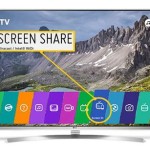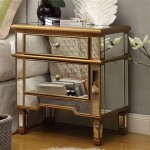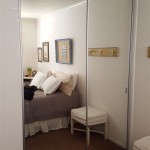Mirror in Altium Designer
Altium Designer offers a powerful feature called "Mirror" that significantly streamlines the design process for printed circuit boards (PCBs). Mirroring allows designers to create a flipped copy of existing objects, facilitating the development of symmetrical layouts and multi-channel designs. This article explores the functionality of the Mirror command in Altium Designer, detailing its various applications and benefits.
Mirroring PCB Features
The Mirror command can be applied to a wide range of design objects on a PCB, including tracks, vias, pads, components, and graphical elements. This capability is particularly useful when designing circuits with inherent symmetry, such as differential pairs or multi-channel amplifier stages. By mirroring existing layout elements, designers can ensure precise replication and save significant design time, reducing the risk of manual errors introduced through repetitive placement.
Accessing the Mirror Command
The Mirror command is accessible through several routes within Altium Designer. Users can access it via the "Edit" menu, the right-click context menu after selecting objects, or through designated keyboard shortcuts. This flexibility allows designers to integrate the Mirror command seamlessly into their preferred workflow.
Mirror Axis Options
Altium Designer offers flexibility in defining the mirror axis. Designers can choose to mirror objects across the X-axis, Y-axis, or a user-defined axis. The ability to define a custom axis allows for nuanced mirroring operations, catering to complex designs with non-standard symmetry requirements. This level of control enhances the versatility of the Mirror command, enabling its application in diverse design scenarios.
Mirroring Components and Footprints
Mirroring components requires careful consideration of the component's orientation and functionality. While mirroring a passive component like a resistor might be straightforward, mirroring an IC might require additional adjustments. Altium Designer intelligently handles component mirroring, ensuring that mirrored components maintain their designator integrity. However, designers need to be mindful of potential issues related to pin numbering and component markings, particularly for complex integrated circuits.
Mirroring in Multi-Channel Designs
In multi-channel designs, the Mirror command becomes especially valuable. Imagine designing a four-channel amplifier. By laying out one channel meticulously and then mirroring it three times, a designer can quickly create a symmetrical and balanced layout for all four channels. This not only saves time but also ensures consistency across all channels, minimizing potential performance variations.
Considerations for Mirroring
While mirroring offers significant advantages, designers should be aware of certain considerations. Mirroring text requires specific attention, as mirrored text will appear reversed. Also, mirroring components with polarity markings, like diodes or electrolytic capacitors, requires careful review to ensure correct orientation in the mirrored design. Altium Designer provides tools and visual cues to aid in this process, helping designers avoid potential errors.
Mirroring and Design Rules
Design rules are crucial for maintaining signal integrity and manufacturability. When mirroring layout elements, it's essential to ensure that the mirrored objects also comply with the defined design rules. Altium Designer's design rule check (DRC) can be utilized after mirroring to verify that the new layout elements adhere to the specified constraints. This step is critical for preventing potential fabrication issues or signal integrity problems downstream.
Mirroring and 3D Visualization
Altium Designer's 3D visualization capabilities are beneficial for visually inspecting the mirrored design. After mirroring, designers can switch to the 3D view to examine the physical layout and identify potential clearance issues or other design flaws. This visual inspection can help catch errors early in the design process, preventing costly rework later on.
Mirroring Groups of Objects
Altium Designer allows the mirroring of entire groups of objects, simplifying complex mirroring operations. By grouping logically related objects together and then mirroring the group, designers can maintain the relative positioning and relationships between the objects within the group. This capability is particularly beneficial for mirroring complex sections of a layout, such as entire circuit blocks or sections of a power delivery network.
Mirroring and Design Variants
When working with design variants, the Mirror command can be used to create mirrored versions of different variant configurations. This enables designers to quickly generate variations of a design with mirrored layouts, streamlining the design process for products that require multiple configurations with mirrored characteristics.
Ultimately, proficient use of the Mirror command in Altium Designer can significantly enhance productivity and design quality. By understanding its capabilities and potential pitfalls, designers can leverage this powerful tool to streamline their workflow and create robust, symmetrical, and high-performance PCB layouts.

How Do I Flip And Rotate Components In Altium Designer Pcb Design Blog
How Do I Flip And Rotate Components In Altium Designer Pcb Design Blog
How Do I Flip And Rotate Components In Altium Designer Pcb Design Blog
How Do I Flip And Rotate Components In Altium Designer Pcb Design Blog
How Do I Flip And Rotate Components In Altium Designer Pcb Design Blog

How Do I Flip And Rotate Components In Altium Designer Pcb Design Blog

How Do I Flip And Rotate Components In Altium Designer Pcb Design Blog

Mirroring A Project In The Workspace Using Simple Sync Through Altium Designer 23 Technical Documentation
How Do I Flip And Rotate Components In Altium Designer Pcb Design Blog

Creating A Board Fabrication Panel In Altium Designer 22 Technical Documentation








